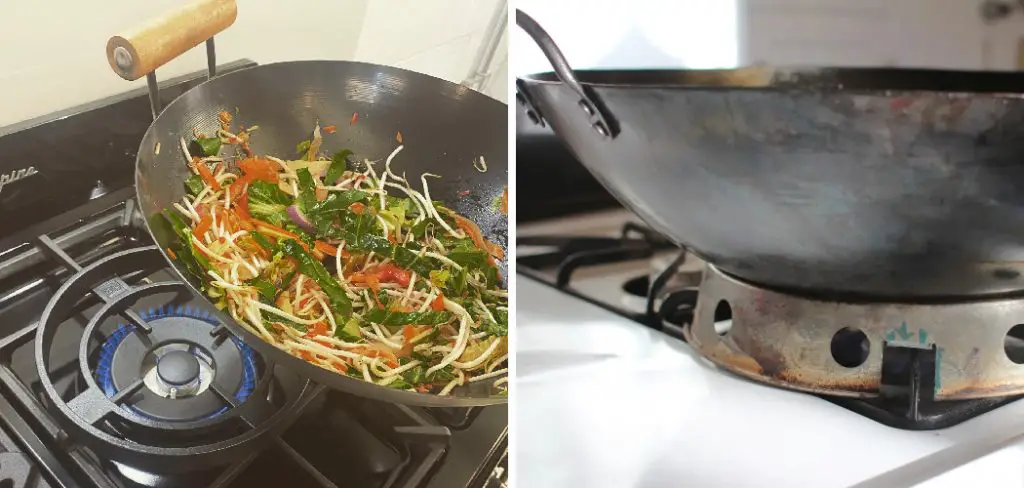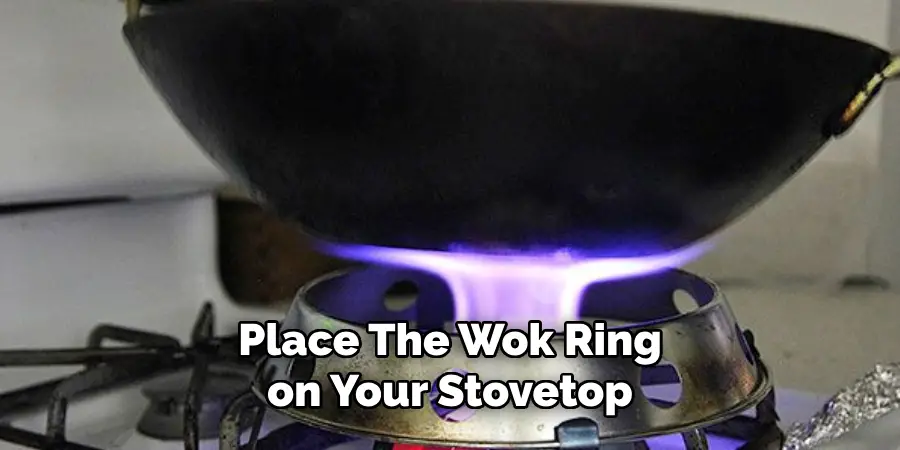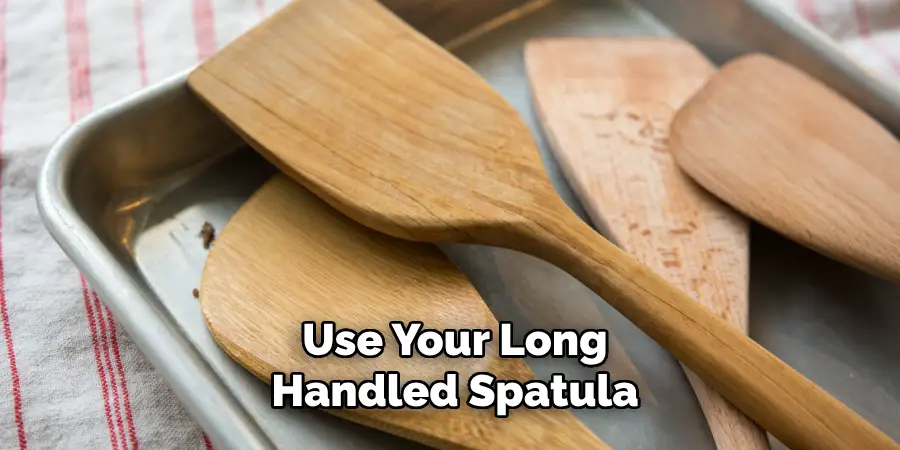Are you looking to expand your cooking skills and try out new recipes using a wok? A wok ring is an essential tool that can help you achieve delicious stir-fry dishes, steamed vegetables, and more.

A wok ring is essential for anyone looking to achieve authentic stir-fry results at home. Designed to cradle the round bottom of a traditional wok, this ring ensures stability and even heat distribution on flat stovetops, making it indispensable for consistent cooking.
Whether you’re a seasoned chef or a home cook, understanding how to use a wok ring can elevate your culinary creations, allowing you to easily make delicious, perfectly cooked meals.
In this guide, we’ll walk you through the steps to effectively use a wok ring, from selecting the right type to mastering cooking techniques.
What Will You Need?
Before we dive into the details of using a wok ring, let’s take a look at what you’ll need to get started. Along with your wok ring, you’ll also need:
- A Round-bottomed Wok: The traditional shape of a wok is essential for even heat distribution and allows for ideal stirring and tossing of ingredients.
- A Flat Stovetop: Wok rings are designed for flat surfaces, so make sure your stove has a solid, level surface.
- Heat-resistant Gloves or Mitts: The wok ring will get hot during cooking, so it’s important to protect your hands with heat-resistant gloves or mitts.
- Long-handled Spatula or Wok Ladle: These utensils are perfect for stir-frying and scooping ingredients in the wok.
- Tongs: Tongs are useful for flipping and turning ingredients while using a wok ring.
Now that you have everything you need, let’s review the steps for effectively using a wok ring.
10 Easy Steps on How to Use a Wok Ring
Step 1: Set Up Your Wok Ring
Place the wok ring on your stovetop and ensure it sits securely. The stability of the wok ring is crucial, as an unstable ring can lead to uneven cooking or even accidents. Ensure it is centered over the burner you plan to use, and check that the wok ring is not wobbly or tilted.

Step 2: Position Your Wok
Once the wok ring is securely in place, carefully position your round-bottomed wok on top of the ring. The bottom of the wok should fit snugly into the ring, ensuring it remains stable during cooking. Proper positioning is essential for even heat distribution and effective cooking. Make sure the wok is centered on the ring for the best results.
Step 3: Preheat Your Wok
Turn on the burner to medium heat and let your wok preheat for a few minutes. Preheating is a crucial step, as it ensures that the work is evenly heated, which helps to prevent food from sticking and allows for quick, even cooking.
You can test if the wok is hot enough by flicking a few drops of water onto the surface; if the water sizzles and evaporates almost immediately, the wok is ready for cooking.
Step 4: Add Oil
Once the wok is preheated, add a small amount of oil to the wok. Swirl the oil around to coat the entire surface. Use an oil with a high smoke point, such as peanut oil or vegetable oil, to avoid burning. The layer of oil ensures that your ingredients won’t stick to the wok and contributes to a consistent stir-fry texture.
Step 5: Begin Cooking
You can now start adding your ingredients with the wok properly oiled and preheated. Begin with aromatics like garlic, ginger, and onions, which lay the foundation for the dish’s flavor.
Stir-fry these aromatics briefly until fragrant before adding your proteins and vegetables. Use your long-handled spatula or wok ladle to continuously toss and stir the ingredients, ensuring they cook evenly.

Step 6: Adjust the Heat
You may need to adjust the heat to maintain the ideal cooking temperature as you cook.
Lower the heat if you notice your ingredients browning too quickly or sticking to the wok. Conversely, you can increase the heat if the cooking process seems slow. Proper heat management is key to achieving the perfect stir-fry.
Step 7: Add Sauces and Seasonings
Once your proteins and vegetables are nearly cooked, it’s time to add your sauces and seasonings. This step is crucial for infusing your dish with its signature flavors. Common sauces include soy sauce, oyster sauce, and hoisin sauce, while additional seasonings might include salt, pepper, sugar, or chili flakes for added spice.
Pour the sauces around the edge of the wok, not directly onto the ingredients, to allow them to caramelize slightly before mixing. Stir the ingredients quickly and continuously to ensure the sauces evenly coat everything, imparting a rich, balanced taste throughout the dish.
Step 8: Toss and Combine
After adding the sauces and seasonings, continue to toss and stir the ingredients briskly. Use your long-handled spatula or wok ladle to distribute the sauces and seasonings well.
This process, known as “tossing,” helps to combine the ingredients and allows the flavors to meld together. Proper tossing also ensures that ingredients cook evenly and maintain their crispiness and vibrant colors.
Step 9: Monitor Consistency and Doneness
Keep an eye on the texture and consistency of your stir-fry as you cook. Vegetables should remain slightly crisp, and proteins should be tender and fully cooked.

If needed, make adjustments by adding a splash of water or broth to prevent ingredients from drying out or sticking to the wok. Taste the dish occasionally to check for seasoning balance and doneness. Cooking with a wok is dynamic, so stay attentive and responsive to the food’s needs.
Step 10: Serve Immediately
Remove the wok from the heat when your stir-fry is cooked to perfection and serve your dish immediately. Wok-cooked meals are best enjoyed fresh and hot, straight from the wok to the plate.
Accompany your stir-fry with steamed rice or noodles to complete the meal. Garnish with fresh herbs, like cilantro or green onions, for an extra burst of flavor and visual appeal. Enjoy your delicious, homemade stir-fry, made possible with the help of your trusty wok ring!
By following these ten steps, you can use your wok ring effectively and create flavorful, authentic stir-fry dishes in your kitchen.
5 Additional Tips and Tricks
- Stabilize Your Wok: Ensure that your wok ring is placed on a stable surface and securely holds the wok in position. This will prevent any wobbling or tipping over while you cook.
- Adjust Flame Intensity: Depending on what you are cooking, you may need to adjust the flame intensity. A wok ring can help concentrate the heat at the bottom of the wok, so a lower flame may sometimes suffice.
- Use with Different Cooktops: A wok ring is versatile and can be used with different types of cooktops, including gas, electric, and induction. Make sure to select the right wok ring that is compatible with your cooktop for optimal performance.
- Check for Hot Spots: Before adding all your ingredients, it’s important to check for hot spots on the wok surface. This can be done by adding a few drops of water and observing how quickly they evaporate. If the evaporation is even, then your wok is ready for cooking.
- Clean Regularly: Regular cleaning of the wok ring helps in maintaining its efficiency. Remove any food residues or grease that may accumulate after each use to keep it in good condition and to ensure even heat distribution during cooking.

With these additional tips and tricks, you can now confidently use a wok ring to prepare delicious meals with ease.
5 Things You Should Avoid
- Using the Wrong-Sized Wok Ring: Ensure you have an appropriately sized wok ring for your wok and cooktop. Using an incorrectly sized ring can lead to instability and uneven heating.
- Overloading the Wok: Avoid filling the wok to the brim with ingredients. This can cause spillage and make it difficult to stir-fry effectively. Keeping the wok at about two-thirds full allows for better movement and even cooking.
- Ignoring Safety Precautions: Always be cautious and use proper kitchen tools to handle the hot wok and wok ring. Ignoring safety measures like using oven mitts can result in burns or accidents.
- Neglecting Regular Maintenance: Don’t overlook the importance of regular cleaning and maintenance of your wok ring. Accumulated grease or food residues can affect performance and hygiene.
- Cooking on a Unstable Surface: Avoid using the wok ring on surfaces that aren’t completely level. An uneven surface can cause the wok to tip over, resulting in spills, burns, or damaged cookware.
By avoiding these common mistakes, you can ensure safe and efficient use of your wok ring for many delicious meals to come.
Conclusion
In summary, how to use a wok ring can greatly enhance your stir-frying and overall cooking experience.
By stabilizing your wok, adjusting the flame appropriately, and ensuring compatibility with your cooktop, you can achieve optimal cooking conditions. Additionally, regular maintenance and awareness of potential hot spots will contribute to consistently delicious results.
Avoid common pitfalls such as using an improperly sized ring, overloading your wok, and neglecting safety and maintenance to ensure both your safety and cooking efficiency.
With these guidelines and tips, you’ll be well-equipped to utilize your wok ring to its fullest potential, creating delightful and evenly-cooked meals every time.
Edmund Sumlin is a skilled author for Metal Fixes, bringing 6 years of expertise in crafting a wide range of metal fixtures. With a strong background in metalwork, Edmund’s knowledge spans various types of fixtures, from decorative pieces to functional hardware, blending precision with creativity. His passion for metalworking and design has made him a trusted resource in the industry.
Professional Focus:
- Expert in Metal Fixtures : Edmund aesthetic specializes in creating durable and innovative metal fixtures, offering both appeal and functionality. His work reflects a deep understanding of metalworking techniques and materials.
- Sustainability Advocate : He is dedicated to using sustainable practices, ensuring that every fixture is crafted with eco-friendly methods while maintaining high-quality standards.
In his writing for Metal Fixes, Edmund provides valuable insights into the latest trends, techniques, and practical advice for those passionate about metal fixtures, whether they are professionals or DIY enthusiasts. His focus on combining artistry with engineering helps others discover the true potential of metal in design.


